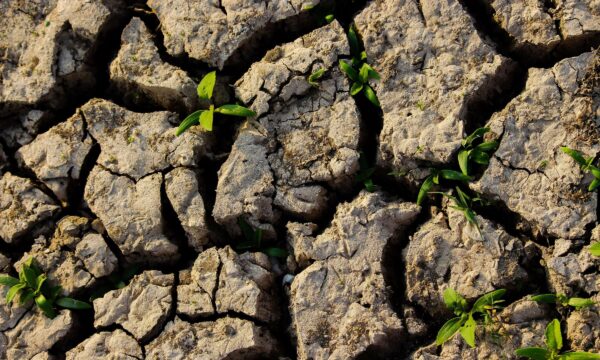The United Nations Food and Agriculture Organisation (FAO) has this month warned that Desert Locust (Schistocerca gregaria) swarms are invading cropping areas of northern Sudan. The swarms originated from winter breeding areas on the Red Sea coastal plains and subcoastal areas in northeast Sudan and southeast Egypt. The situation requires close monitoring as more swarms are expected to form in the coming weeks that could move into parts of Sudan and southern Egypt. If no further rains fall and the vegetation dries out, some of these swarms could move into the interior of both countries and also cross the Red Sea to the coast of Saudi Arabia.
Locusts belong to the Acrididae family (in the order Orthoptera which includes grasshoppers and crickets) and when triggered by certain cues such as increased crowding with other locusts have the ability to change their morphology, behaviour and physiology over several generations. This phase change occurs from a solitary to a gregarious phase, eventually causing the locusts to form dense hopper bands and swarms. One of the most serious locust pests is the Desert Locust.
Locusts can have a major impact on humans as a result of damage caused to crops by sporadic swarming events. Desert Locusts can eat their own weight of food per day, meaning a swarm of 50,000,000 locusts/km² in a large swarm can consume an astonishing 100 tonnes/km²/day of food. Locust swarms also have social and political implications due to their threat to food security and the implementation of management and control strategies. Locust plagues are sporadic and unpredictable, and will only occur if conditions are right to facilitate population outbreaks and upsurge events.

The morphological changes between the solitary and gregarious phases of the Desert Locust, Schistocerca gregaria. The gregarious phase locust is capable of forming enormous swarms with as many as 80 million locust adults per square kilometer of a swarm. © NASA GFSC via Wikimedia Commons (PD NASA)
Elements of locust management include population monitoring and population prediction. However there are difficulties involved with estimating locust populations, since the majority of breeding places are remote and inaccessible and adult locusts are highly mobile insects which occupy huge areas of land. The FAO operates a centralised Desert Locust Information service within the Locust Group at FAO Headquarters in Rome, Italy. All locust affected countries transmit data on locust populations to FAO who use remote sensing data, meteorological data, locust development and locust migration models and geographic information systems (GIS) analysis to create monthly FAO Desert Locust bulletins with forecasts and warnings of locust breeding and migration. To see the latest FAO Desert Locust bulletin click here. This data can then be used to decide whether control measures are necessary and if so, what control measures can be used to reduce the population safely and efficiently.
Control techniques for managing locust swarms include cultural control (digging, burning), baiting (scattering locust food impregnated with insecticides), dusting with insecticide and spraying liquid insecticides (chemical or biological) using ultra low volume (ULV) application. ULV spraying is one of the most preferred methods as it uses very low volumes of liquid in comparison to conventional spraying (0.5-3 litres/ha in comparison to 100s or 1000s of litres for other spraying methods) and uses oil based formulations which greatly reduce evaporation. The method is based on creating small, even sized droplets which are carried and impacted on the target by the wind. Biopesticides such as Metarhizium anisopliae have previously been applied successfully using ULV methods to control locust populations as part of locust integrated management programs.
Locust control is a challenge and would be greatly improved by better cost effectiveness, efficacy, safety and reliability of management operations. In particular there are difficulties involved in predicting outbreaks given the lack of periodicity of such incidences and the uncertainty of rainfall in locust areas. However technological advances including lower cost satellite imagery, custom GIS systems and improved weather models will continue to improve forecasting of locust populations, and therefore facilitate locust monitoring and management programs.
References:
2 Comments
Leave a Reply
Related News & Blogs
How do pest risk registers address the spread of plant pests in Africa?
Pest risk registers can help to solve problems in agriculture, addressing the growing global threat of plant pests. Moreover, changing weather patterns, led by rising temperatures, are causing them to reproduce faster and expand into new regions. In ad…
10 July 2025






Plagues of locusts are now south of Israel:
http://www.freshplaza.com/news_detail.asp?id=106705
Nice post, and I know this is old BUT: The first image of a desert locust is one of a subadult, not an adult:
https://commons.wikimedia.org/wiki/File:Schistocerca_gregaria_wuestenheuschrecke.jpg
You can tell from its wing buds. (It would also be odd for the gregarious form to not have access to long range migration.)